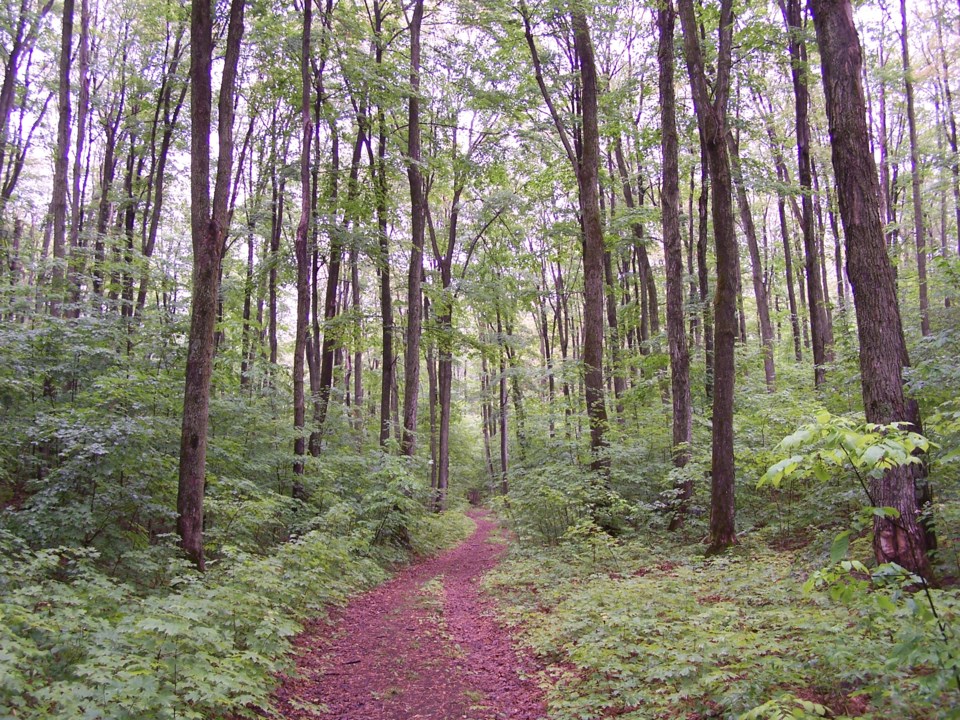It's amazing how easy it is to let your natural skills go to waste. For example, take looking and listening, two senses most of us take for granted and seldom develop beyond the basic needs level.
A number of years ago (OK, a number of decades ago), I was baffled by the saying, "I know you're looking, but what are you seeing?" Eventually, this message became quite clear, especially when applied to viewing nature. Whenever I'm with children, I'm always amazed at what they see; whenever I'm with adults, I'm amazed at what they don't see. It seems that as we get older, we sometimes forget how to see what it is we are looking at.
Of course there's always "I know you can hear me, but are you listening to a word I'm saying?" Perhaps this column is getting dangerously close to analyzing domestic situations; best get refocused back on nature.
To throw in another cliché, I've found that for every person who "can't see the forest for the trees," there is a greater number who "can't see the trees for the forest."
Skills of observation can be learned and enhanced, but must then be practised to serve us well. At times, when I'm out with a group pointing out flitting birds and minuscule insects, the question arises as to how can I spot them so quickly, or so far away. The answer is that, generally, I know where to look, what to look for and when to look for it. This skill is evident with any ardent birdwatcher or naturalist.
Quite simply, if you are in the woods, don't be looking for ducks. Knowing that a woodlot is the proper habitat for grouse, look for grouse. Knowing that grouse like to hide in shadows at the base of trees, look there first. And suddenly you may see grouse (if there's any to be found). By studying the habits of the species you want to see, finding them becomes much easier.
Another trick is to look for things that 'don't belong.' Even while scooting down the highway, statue-like great blue herons in roadside marshes or the blooms of great lobelia peeking out from grassy ditches can be noted. By looking at the overall scene, a pattern may appear – say, vertical green leaves of cattails. When that pattern is disrupted, perhaps by a grey-coloured blob, a shift in focus may indicate that it's a heron stalking frogs.
However, just when you think you've mastered a technique, along comes someone who makes you wonder if he has had binoculars implanted where his eyeballs used to be. Such a person is Nigel Shaw, an artist and bird bander, who's spent thousands of hours in the field. He captures and bands a great many hawks and owls each year, and to lure them into his nets he must first see them coming from a long way off.
One day, as we stood chatting, he suddenly pointed to the distant horizon and shouted, "Sharp-shin! And it's chasing a marsh hawk!" I looked, and looked, but saw only an expanse of empty, hazy sky. Then, suddenly, there they were, a marsh hawk dipping along just above the treeline, with a robin-sized hawk dive-bombing him. How had he seen them, I wanted to know. He didn't know. He just saw them. That's all.
Within the next half-hour, Nigel located two merlins, eight more sharp-shins, five more marsh hawks, three red-tailed hawks and two that were so far away even he couldn't identify them. He saw these birds because he knew what to look for, where to look and, being the season of hawk migration, when to study a seemingly empty sky.
The skill of listening can also be honed so that you can selectively hear certain sounds. We do this already, albeit subconsciously:Parents can hear their children's voices in a noisy playground; spouses can distinguish their mates’ voices across a room at a party; and birdwatchers can identify a checklist full of species just by sitting quietly at the edge of the woods.
The next time you look at a forest, discover if you can see the trees. Can you separate the individuals from the mass? Can you see how one is connected to the other? And then try listening, really listening, you may be amazed at what you hear. Even if it is your life partner.
